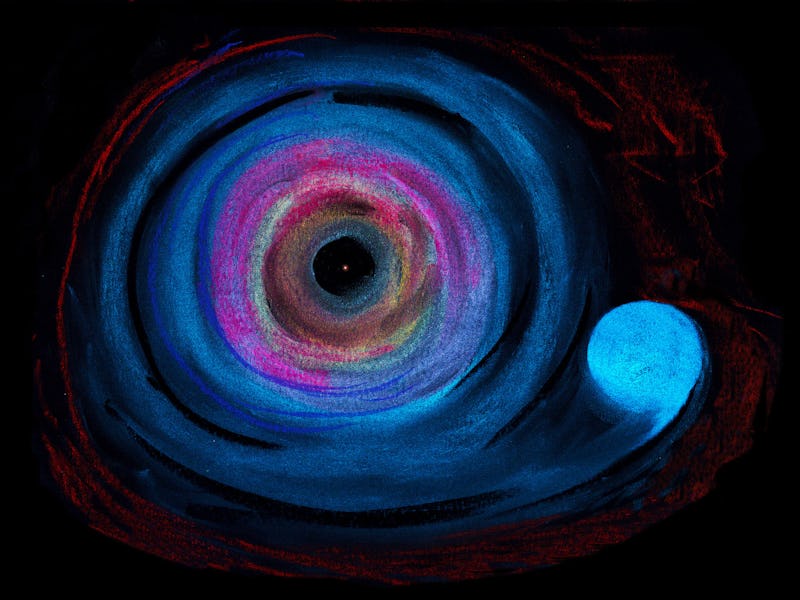A collaboration between the Virgo Observatory and Advanced Laser Interferometer Gravitational-Wave Observatory (LIGO) has yielded the fourth-ever detection of gravitational waves.
It’s a cool find for several reasons, especially if you love pondering crazy questions about the fabric of space and time at 3 a.m. But most notably, the discovery was made by three different gravitational wave detectors working in concert — all past detections involved just two. Having three gravitational wave detectors working together allows physicists to more accurately estimate where in the cosmos these super-fast ripples in spacetime come from.
Gravitational waves are caused by extremely chaotic events like black holes merging. On August 14th, two LIGO gravitational wave detectors and the Advanced Virgo instrument detected ripples from one such violent event — a smash up of two black holes 1.8 billion light-years away called GW170814. The two black holes — one 31 times the mass of our sun, the other 25 — collided to create a spinning black hole at 53 times the mass of our sun. LIGO and Virgo scientists announced their findings at a press conference today in Turin, Italy. Additionally, a paper elucidating their research has been accepted for publication in the Physical Review Letters.
Of the three detectors, Advanced Virgo is definitely the rookie of the group, as it only started working with LIGO on August 1st. Still, it plays a critical role for physicists — three operating detectors can triangulate a more precise location of a gravitational wave whereas two detectors leave a lot more guesswork.
Physics fanatics and people who watch 10-minute-long YouTube videos about time as an illusion will be delighted to know that this is only the first of what could be many discoveries from this crackerjack team of gravitational wave detectors.
“This is just the beginning of observations with the network enabled by Virgo and LIGO working together,” MIT physicist David Shoemaker, spokesperson for LIGO, said in a press release. “With the next observing run planned for Fall 2018 we can expect such detections weekly or even more often.”
So next time you’re feeling lonely or insignificant in the grandeur of the universe, remember things could always be worse. You could be hurtling through the cold, unfeeling abyss of space, about to collide with a hungry black hole.
If you liked this article, check out this video on how light pollution obstructs 80 percent of the human race’s view of space.
